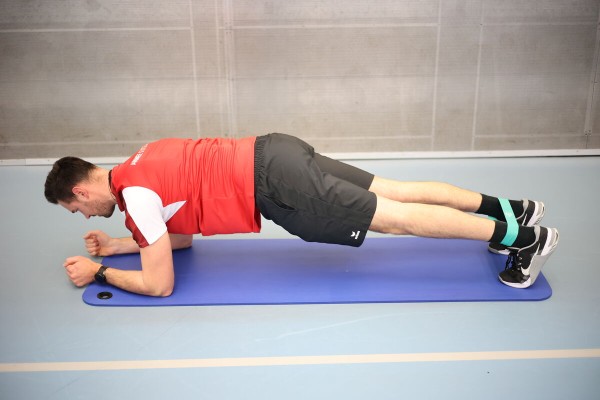In the forearm plank, the outstretched legs and upper body practically form a line. The legs are supported on the tips of the toes and the upper body on the forearms. The forearms lie flat and parallel to each other with the upper arms resting vertically on the floor (90 degree angle at the elbow joint). Stretch an elastic band between the legs (place the band around the ankles), move the legs alternately to the side (hip abduction on both sides) and back to the centre (right foot to the side, left foot to the side, right foot to the centre, left foot to the centre, etc.).
Attention:
Head, torso, hips and knees form a line (do not stretch your buttocks upwards or let them sag, tense your stomach). The hands should not touch each other/be locked.
Lighten:
Choose a rubber band with less resistance.
Harden:
Choose a rubber band with greater resistance; additional weight (on the legs and/or back); unstable support for the arms.
Variant I:
In push-up position (instead of forearm support).
Variant II:
Simultaneously spread your legs by jumping slightly and then bring them back together in the starting position.

